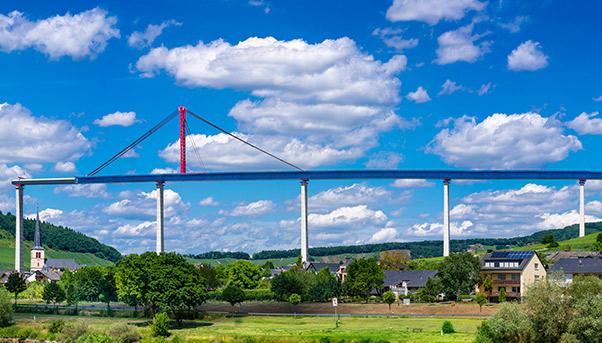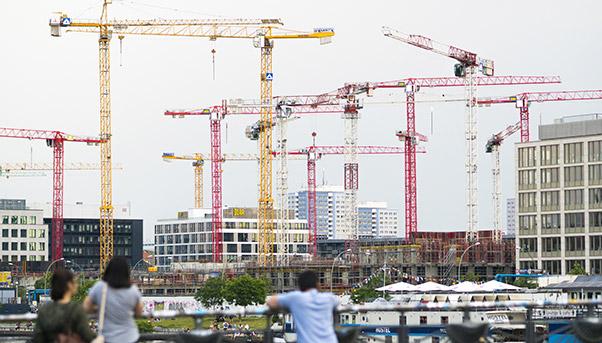
In the latest act of recognition of its deteriorating infrastructure, Germany recently earmarked €4.5 billion to fix 400 bridges in the northwest state of North Rhine-Westphalia by 2027. Having reached the end of their respective service lives, the bridges are in urgent need of repair. Just like the Leverkusen, which crosses the Rhine River between the city of the same name and Cologne. Opened in 1965, the bridge that stretches for a little more than a kilometre was designed to support fewer and lighter vehicles than those that have come to cross it over the years. When traffic reached 128,000 cars and 14,000 heavy vehicles a day, authorities decided to prohibit the passage of trucks as weaknesses in its structure started to appear.
So these heavy vehicles have been obliged to take alternative routes to cross the river, costing them time and money. They take about 40 minutes and 30 kilometres more to reach their respective destinations.
The Leverkusen Bridge is but one of the many examples of obsolete infrastructure across the country, highlighting the urgent need for investment. The amount earmarked for the state’s bridges by the government is part of an infrastructure investment plan launched by the government in 2016 and covered by “We Build Value” that foresees €270 billion for projects across the country by 2030. The government reiterated this year the strategic importance of infrastructure, with the finance ministry indicating in its 2017 budget that it was third in priority after jobs and defense. But international institutions do not consider it enough for a country whose infrastructure they deem needs a major overhaul.
Since 2006, Germany has fallen from third to 13th position for the quality of its infrastructure, according to the Global Competitiveness Report 2016-2017 of the World Economic Forum. The country has suffered similarly drastic falls in other categories, down to 16th for the quality of its roads, 11th for its railway lines and 12th for its air transport. The falls are too big a drop for a one of the world’s leading economies.

Even the International Monetary Fund (IMF) has taken notice. In its latest report on the country, it highlighted the main problems to be confronted in the short term. Among a list of key policy recommendations, it highlights: «Make more rapid progress toward meeting public infrastructure needs, while tackling administrative bottlenecks».
In addition to the country’s reluctance to spend despite a current account surplus, the IMF blames bureaucracy for this lack of initiative. During the election campaign, even Angela Merkel acknowledged it as an obstacle to development.
The IMF has called on the country to remove bureaucratic and regulatory hurdles that limit investment, especially in municipalities. It also recommends more ambitious public works than those already slated. «The plan is not binding and budget appropriations will be decided on a rolling basis», it said. «The public investment backlog should be addressed more vigorously already this year and next, particularly if revenue keeps overperforming. Reprioritizing within the budget envelope could also open space for more infrastructure investment in the coming years».
The IMF’s call reiterates what had been said previously. In 2014, the IMF said Germany ought to make more ambitious public investments. The amount so far is equal to 2% of gross domestic product – considered far too little for it to make much of a difference.
Germany has yet to answer to this call. Risking delays in the future and putting a brake on stronger growth.

